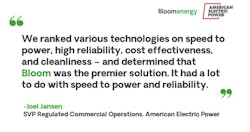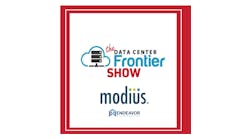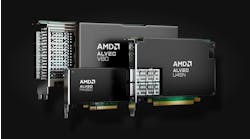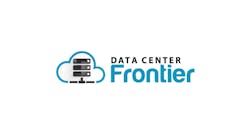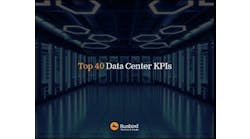How Distributed Generation Is Helping Data Centers Overcome Energy Challenges in the AI Era
It’s no secret that the rise of artificial intelligence is driving massive, rapid growth for global data centers. Securing reliable, scalable, and affordable energy is both more important and more challenging than ever before. As data center operators and hyperscalers re-evaluate their power strategies to meet growing demand, distributed power generation is emerging as a key solution.
In a recent webinar focused on data center power, Kevin Passalacqua, Vice President, Structured Finance at Bloom Energy and Joel Jansen, SVP Regulated Commercial Operations at American Electric Power (AEP), joined Data Center Frontier Editor at Large Melissa Farney to discuss how innovative distributed power solutions, including fuel cells, can help address these challenges and balance the need for clean energy with cost considerations and other value drivers.
In this article, we will take a closer look at the highlights from this timely discussion, as well as how partnerships are emerging as a pivotal factor to resolve the data center power dilemma.
Data Centers’ Growing Energy Demand and Grid Challenges
The existing grid, designed for an analog economy, requires significant adaptation to support the current and future demands of a digital and AI economy. Bloom Energy’s 2025 Data Center Power Report found that data centers could require 55 GW of IT capacity in the next five years, accounting for 8-12% of total U.S. power demand by 2030.
Data centers face seven to 10-year wait times for transmission network buildouts to support their needs, particularly in some areas that AEP serves. For hyperscalers developing power-intensive AI models and expanding data center operators alike, waiting years for grid capacity to catch up is not an option. The urgent need for alternative energy solutions that are ready now is clear.
Distributed Power Generation: A Ready Data Center Alternative
Distributed generation, like Bloom Energy’s fuel cell technology, involves co-locating small-scale power sources close to the point of energy use. This approach offers several advantages for data center operators, including greater control over resources and a more hands-on approach to power management.
Onsite power generation allows customers to bypass infrastructure constraints and lengthy approval processes while still balancing grid power with onsite resources. Distributed generation for data centers is now approaching utility-scale development, with projects ranging from hundreds of kilowatts to hundreds of megawatts.
Integrating distributed power generation with the existing grid presents significant challenges, as grids were not initially designed for bidirectional power flow. Historically, electricity has been delivered from large central facilities via transmission and distribution networks. Utilities must ensure that distributed resources operate safely and equitably for all customers.
Key Distributed Power Generation Advantages and Misperceptions
Distributed generation offers several critical advantages for providing data centers with reliable, scalable power. It can enable new data centers to become operational in months, versus the years they would wait for grid expansion. This enables them to generate substantial revenue faster and creates clear cost attribution for power, avoiding concerns about general ratepayers subsidizing data center costs.
One common misconception about distributed generation is that its cost is significantly higher than that of other power sources. While this model may slightly increase power costs, the revenue and margin benefits far outweigh this incremental expense. An accurate cost comparison should consider the expense of building new generation and transmission infrastructure, as well as the lost revenue from waiting years to bring a data center online. In fact, analysis by Morgan Stanley, as cited in the Bloom Energy 2025 Data Center Power Report, estimates that “a 1-year expedited time to power is worth $47-68/MWh on an NPV basis to a data center developer.”
How Fuel Cell Technology Is Changing the Game
Fuel cell technology uniquely addresses the growing energy demands of data centers by providing a solution that balances speed to power, unwavering reliability, cost competitiveness, and scalability.
During the webinar, Bloom Energy highlighted how its fuel cells utilize hydrogen or natural gas as a feedstock and create electrochemical reactions that convert chemical energy directly into electrical energy. Because no combustion is involved, this method produces minimal byproducts: heat, water, and a small amount of CO2. In addition, Bloom's technology generates negligible amounts of SOx, NOx, and PM10. This enables deployment in locations where traditional combustion technologies would not be feasible, providing data centers with greater flexibility.
Bloom systems are designed for continuous, steady-state power production without scheduled downtime. Its modular architecture allows for flexible deployment in configurations ranging from 5 MW to 200 MW. This scalability makes the technology suitable for various data center sizes, and its fuel cells can adjust their output to match fluctuating data center loads. To date, the company has deployed over 1.4 GW across 1,200 customer sites, including more than 300 MW in data centers.
The Power of Collaboration
Bloom Energy and AEP’s agreement was forged to address the growing challenges data center operators in AEP’s service territories face in getting the power they need to scale quickly.
In search of a solution, AEP evaluated various technologies — including combustion turbines, reciprocating engines, batteries, and fuel cells — ranking them on speed to power, reliability, cost-effectiveness, and cleanliness.
According to AEP, Bloom Energy’s fuel cells emerged as the premier solution to meet the needs of these large customers, especially due to the speed of deployment and reliability. This is the largest commercial procurement of fuel cells in the world to date, with an agreement of up to 1 GW for data center customers.
Looking Ahead: An “All of the Above” Approach for Data Center Energy Demand
As data center energy demand continues to grow, an "all of the above" solution set is essential to meet it. Hybrid solutions that leverage existing grid infrastructure with onsite generation, such as fuel cells, solar, and energy storage, present significant opportunities. Innovative and creative approaches are needed to address this unprecedented moment.
To watch the full webinar, click here.

Natalie Sunderland
Natalie Sunderland is an award-winning Silicon Valley executive with a track record of growing and transforming companies. As Chief Marketing Officer for Bloom Energy, she is responsible for strengthening the company’s market position, accelerating sales and growth, and building an iconic brand. Natalie has over two decades of strategic marketing experience and was named one of Business Insider’s Most Innovative CMOs for 2024.
Most recently, Natalie served as Global Head of Marketing and Communications at The Bank of New York Mellon, where she oversaw all aspects of BNY’s global brand and marketing strategy and introduced a new positioning and brand to modernize the 240-year-old company and galvanize its ecosystem.
Prior to BNY, Natalie spent over a decade in enterprise technology. She was Chief Marketing Officer at Addepar, a high-growth SaaS Fintech and held leadership positions at AI-company Qventus and Castlight Health. Prior to her time in tech, she held executive roles in marketing and product development at Citigroup and American Express.
Originally from Canada, Natalie graduated with a Bachelor of Commerce with Honors from Queen’s University in Kingston, Ontario. She lives in Palo Alto, California, with her family.


